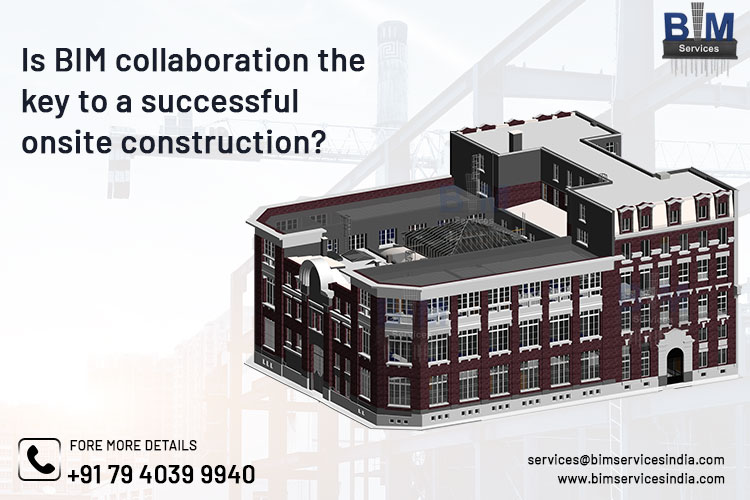Is BIM collaboration the key to a successful onsite construction?

When it comes to a construction of a building or a structure there are a variety of team members and stakeholders involved who have a final say in the design, may it be architects, structural or MEP engineers, project managers etc. Each team member wants to ensure the project follows their specifications as minutely as possible. However, when so many concerned parties are working towards the same end goals it is essential that they remain on the same page. Lack of systematic communication between all the stakeholders could stifle the construction process with overruns, clashes, rework etc.
BIM Services here are important to fulfil this challenge. BIM is more than just 3D visualization. It is an integrated management system that allows the AEC professionals to control cost, time etc. It provides all the requisite tools for enhanced collaboration where in all the team members can work together towards a collective end goal.
Table of Contents
How does BIM enhance collaboration?
One of the key benefits of BIM is facilitating communication and creating mutual understanding between all the members of the BIM team. There are three levels at which BIM enhances collaboration: process, technology and people.
Process:
BIM designs a building using a coherent 3D modeling process which allows for better collaboration. In AutoCAD when construction documents are drafted each change is made on the individual set of construction document for instance floor plans, sections, elevations etc. are all individually drafted and changes also need to be independently done. This means that there is high probability of clashes or construction documents which are not corresponding with each other, leading to confusion and errors during onsite construction. With BIM however, all the stakeholders work on the 3D model in a common data environment and the construction documents are finally extracted from a clash free BIM model. The very process of BIM encourages collaboration and ensures that everyone remains on the same page.
Technology:
BIM in itself facilitates a cloud-based environment where-in any changes made in the 3D model are instantly reflected to all the involved parties. This facilitates an informed decision-making process where no concerned person misses out on any information. Moreover, there are various new plug-ins and software which enables better collaboration. Issue Management platform gathers issues by utilizing software integrations and then raises the very issues to the concerned person or discipline. It also generates detailed reports, creates collaboration workflows and tracks it until it is resolved. Revit Modeling Services can also enable better collaboration. Revit Server allows BIM team located across the Wide Area Network (WAN) to work with each other on a single central Revit model. Autodesk’s BIM 360 on the other hand connects project teams to a unified cloud-based platform and links them to data in real time.
People:
People form a very important part of the collaboration process. Ideally, before starting any BIM process a detailed BEP (BIM Execution Plan) should be created which clearly contains the roles and responsibilities of the people. It defines what each member of the BIM team will work on so there is no duplication of work and so other members know whom to reach out regarding a given matter.
What are the benefits of better collaboration?
Historically the construction industry has always found it challenging to adopt collaboration as working method. BIM has altered this significantly. Firstly, it augments productivity. By working together and getting access to information in real time can reduce time delays and the need for contingency funds. Moreover, when all the team members are involved in the project from the design team to contractors to manufactures it leads to better designing, identification of issues and better construction methods. It means that all changes are agreed upon in the initial stage and all the parties are fully aware of it. It also helps in keeping track of project timeline, costing and reduces any stumbling blocks that could arise when projects are executed in silos. For instance: if manufacturers and installers don’t coordinate then the project could be well delivered before the given time and it could take up valuable space onsite.
Thus, using BIM leads to better productivity and reduces the project delivery time. It ensures that there are no errors which could ultimately cause delays, rework or affect the cost of the project.